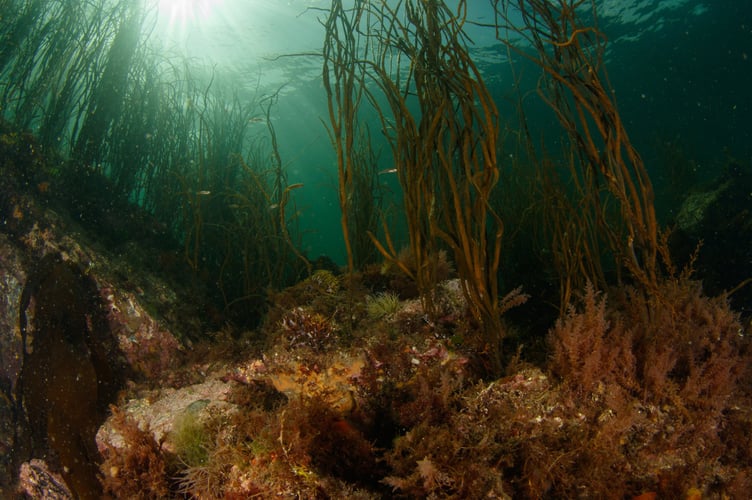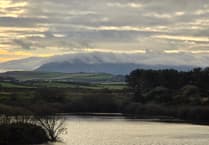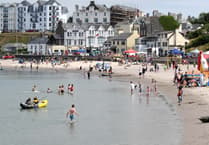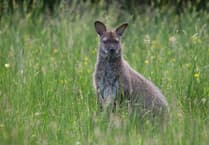Most of us have spent time in our enchanting glens, but how many of us have spent time in our underwater forests? Let’s dive in, venturing below the choppy surface and down through the gently swaying fronds.
As you descend further, the underwater world opens up into a kaleidoscope of colour and life, encrusting pink paint weeds, delicate anemones, and translucent sea squirts adorn the rocky floor.
You’ll notice tiny shrimp darting here and there, rainbow coloured corkwing wrasse hiding under rocky outcrops, and electric blue rayed limpets adorning the kelp fronds like jewels. You are in an underwater treasure box, in the heart of one of the Island’s many kelp forests.
Not only are kelp forests beautiful and otherworldly, they are a really important habitat which keeps the seas surrounding our coastline vibrant and full of life, whilst also supporting life on land.
Kelp forests are important for a diverse array of marine creatures, in part because of the structural complexity they create. These layers provide homes and a source of food for all sorts of species, throughout their life cycle.
Kelp forests benefit not only marine creatures but also humans and other life on land. Beyond serving as important habitats for commercially targeted fish species, they offer practical solutions to environmental challenges and innovative opportunities for a more sustainable future.
Kelp’s capacity to absorb carbon dioxide as it grows means it can help us draw down excess carbon from our atmosphere, supporting our journey to net zero, while also reducing local ocean acidification.
Acting as a natural barrier, kelp forests also dampen waves, safeguarding our coastlines from erosion.
Used for centuries as a fertiliser, kelp is a true wonder plant. With modern technology extending its versatility to support innovation in packaging material, it provides promise of moving away from fossil fuel-based plastics and towards truly biodegradable alternatives. And last, but certainly not least, it provides a sustainable food source rich in essential nutrients, boasting a nutritional profile unmatched by plants on land.
With all the amazing things kelp provide, it’s crucial to ensure the protection of these vital ecosystems for generations to come. Fortunately, around the island, the majority of kelp forests are safeguarded within a network of Marine Nature Reserves (MNRs). Byelaws within these reserves prohibit the extraction or damage of kelp forests, reinforcing their preservation.
You too can play a role in safeguarding kelp forests by:
l Being mindful of your waste—coastal pollution from harsh chemicals and artificial fertilisers can adversely affect kelp forests.
l Reducing your carbon footprint—kelp thrives in cold water and is susceptible to the impacts of warming seas.
l Speaking up for the seas—talk to your friends, family and colleagues about the wonders and importance of maintaining healthy, thriving oceans, essential for all life on earth.
Through understanding and conservation, we hope these enchanting marine habitats remain a source of awe and inspiration for generations to come.

.jpeg?width=209&height=140&crop=209:145,smart&quality=75)


